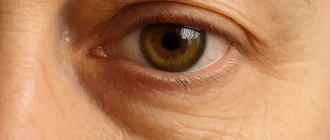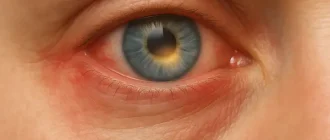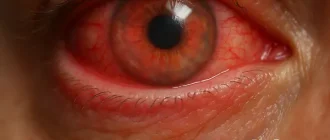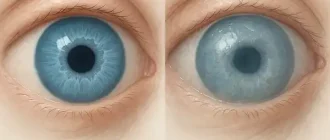Hyperopic anisometropia is a type of visual condition commonly recognized in the world of ophthalmology.
The pervasive medical term ‘anisometropia’ refers to the condition wherein each eye has a different refractive power. The imbalance results in one eye focusing differently than the other. The prefix ‘hyperopic’ denotes the specific type of anisometropia associated with farsightedness. Thus, Hyperopic anisometropia is a condition where one eye is more farsighted than the other.
The Root of the Problem
An eye with hyperopic anisometropia is impotent in focusing on nearby objects due to an irregular curvature of the eye’s lens or if the eyeball is shorter than normal. Essentially, the light entering the eye doesn’t correctly focus on the retina (the light-sensitive layer at the back of the eye). Instead, it focuses behind the retina. Consequently, close objects appear blurred whereas far objects seem exceptionally clear.
| Normal Eye | Hyperopic Eye | |
|---|---|---|
| Focus Point | On the Retina | Behind the Retina |
| Problem Objects | None | Close Objects |
Signs and Symptoms

Patients with hyperopic anisometropia may find themselves suffering from eyestrain or headaches, especially after reading or other close work. They may also face a challenge in maintaining a clear vision as the severity of the condition escalates.
Treatment Options
Thankfully, hyperopic anisometropia is manageable with several options available to patients. These could include wearing eyeglasses or contact lenses, which help focus light more directly on the retina. Additionally, refractive surgery might be considered; this can rectify the shape of the eye, allowing proper light focus.
Recent advancements in technology and medicine allow for laser procedures like LASIK (Laser-Assisted in situ Keratomileusis) to be undertaken. Photorefractive keratectomy (PRK) is also another type of laser eye surgery that could be a viable option.
| Treatment Option | Brief Explanation |
|---|---|
| Eyeglasses | Corrects light focus using lenses |
| Contact Lenses | Provides an alternative to glasses |
| Refractive Surgery | Changes the shape of the eye for better light focus |
| LASIK | A laser procedure to correct vision |
| PRK | Another type of laser eye surgery |
Dealing with Hyperopic Anisometropia
Hyperopic anisometropia may pose as an inconvenient burden in one’s life, causing problems such as blurred vision or eyestrain. Thankfully, modern solutions from eyeglasses, contact lenses, to laser eye surgeries offer treatments for mitigation or potential full recovery. If a person suspects they have hyperopic anisometropia or any visual impairment, it’s crucial to visit an optometrist or ophthalmologist for a thorough eye examination. With proper care and treatment, one can manage this condition effectively and lead a comfortable, clear-sighted life.





